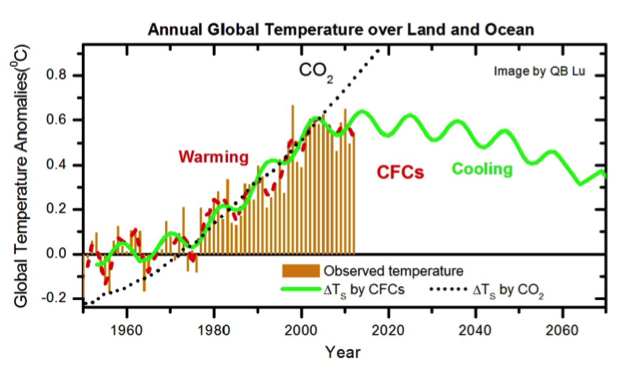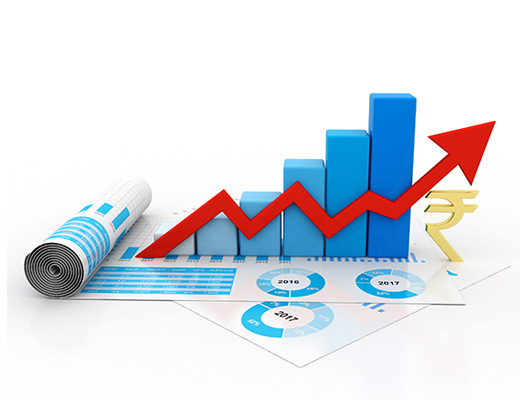Solution for: How war debris could cause cancer
Answer Table
| 1. D | 8. TRUE |
| 2. G | 9. NOT GIVEN |
| 3. E | 10. the military |
| 4. A | 11. high density |
| 5. G | 12. self-sharpening |
| 6. FALSE | 13. chemical toxicity |
| 7. TRUE |
Exam Review
How war debris could cause cancer

A Could the mystery over how depleted uranium might cause genetic damage be closer to being solved? It may be, if a controversial claim by two researchers is right. They say that minute quantities of the material lodged in the body may kick out energetic electrons that mimic the effect of beta radiation. This, they argue, could explain how residues of depleted uranium scattered across former war zones could be increasing the risk of cancers and other problems among soldiers and local people.
B Depleted uranium is highly valued by the military, who use it in the tips of armourpiercing weapons. The material’s high density and self-sharpening properties help it to penetrate the armour of enemy tanks and bunkers. Its use in conflicts has risen sharply in recent years. The UN Environment Programme (UNEP) estimates that shells containing 1700 tonnes of the material were fired during the 2003 Iraq war. Some researchers and campaigners are convinced that depleted uranium left in the people exposed to it. Governments and the military disagree, and point out that there is no conclusive epidemiological evidence for this. And while they acknowledge that the material is weakly radioactive, they say this effect is too small to explain the genetic damage at the levels seen in war veterans and civilians.
C Organisations such as the UK’s Royal Society, the US Department of Veterans Affairs and UNEP have called for more comprehensive epidemiological studies to clarify the link between depleted uranium and any ill effects. Meanwhile, various testtube and animal studies have suggested that depleted uranium may increase the risk of cancer, according to a review of the scientific literature published in May 2008 by the US National Research Council. The authors of the NRC report argue that more long-term and quantitative research is needed on the effects of uranium’s chemical toxicity. They say the science seems to support the theory that genetic damage might be occurring because uranium’s chemical toxicity and weak radioactivity could somehow reinforce each other, though no one knows what the mechanism for this might be.
D Now two researchers, Chris Busby and Ewald Schnug, have a new theory that they say explains how depleted uranium could cause genetic damage. Their theory invokes a well-known process called the photoelectric effect. This is the main mechanism by which gamma photons with energies of about 100 kiloelectronvolts (keV) or less are blocked by matter: the photon transfers its energy to an electron in the atom’s electron cloud, which is ejected into the surroundings.
An atom’s ability to stop photons by this mechanism depends on the fourth power of its atomic number - the number of protons in its nucleus - so heavy elements are far better at intercepting gamma radiation and X-rays than light elements. This means that uranium could be especially effective at capturing photons and kicking out damaging photoelectrons: with an atomic number of 92, uranium blocks low-energy gamma photons over 450 times as effectively as the lighter element calcium, for instance.
E Busby and Schnug say that previous risk models have ignored this well-established physical effect. They claim that depleted uranium could be kicking out photoelectrons in the body’s most vulnerable spots. Various studies have shown that dissolved uranium - ingested in food or water, for example - is liable to attach to DNA strands within cells, because uranium binds strongly to DNA phosphate. “Photoelectrons from uranium are therefore likely to be emitted precisely where they will cause most damage to genetic material,” says Busby.
Busby and Schnug base their claim on calculations of the photoelectrons that would be produced by the interation between normal background levels of gamma radiation and uranium in the body. “Our detailed calculations indicate that the phantom photoelectrons are the predominant effect by far for uranium genome toxicity, and that uranium could be 1500 times as powerful as an emitter of photoelectrons than as an alpha emitter.” Their computer modelling results are described in a peer-reviewed paper to be published in this month by the IPNSS in a book called Loads and Fate of Fertiliser Derived Uranium.
G Hans-Georg Menzel, who chairs the International Commission on Radiological Protection’s committee on radiation doses, acknowledges that the theory should be considered, but he doubts that it will prove significant. He suspects that under normal background radiation the effect is too weak to inflict many of the “double hits” of energy that are known to be most damaging to cells. “It is very unlikely that individual cells would be subject to two or more closely spaced photoelectron impacts under normal background gamma irradiation,” he says. Despite his doubts, Menzel raised the issue last week with his committee in St Petersburg, Russia, and says that several colleagues “intended to collect relevant data and perform calculations to check whether there was any possibility of a real effect in living tissues”. Organisations in the UK, including the Ministry of Defence and the Health Protection Agency, say they have no plans to investigate Busby’s hypothesis.
H Radiation biophysicist Mark Hill of the University of Oxford would like to see a fuller investigation, though he suggests this might show that the photoelectric effect is not as powerful as Busby claims. “We really need more detailed calculations and dose estimates for realistic situations with and without uranium present,” he says. Hill’s doubts centre on an effect called Compton scattering, which he believes needs to be factored into any calculations. With Compton scattering, uranium is only 4.5 times as effective as calcium at stopping gamma photons, so Hill says that taking it into account would reduce the relative importance of uranium as an emitter of secondary electrons. If he is right, this would dilute the mechanism proposed by Busby and Schnug.
I The arguments over depleted uranium are likely to continue, whatever the outcome of these experiments. Whether Busby’s theory holds up or not remains to be seen, but investigating it can only help to clear up some of the doubts about this mysterious substance.
Questions 1-5
The reading Passage has nine paragraphs A-I.
Which paragraph contains the following information?
Write the correct letter A-I, in boxes 1-5 on your answer sheet. NB you may use any letter more than once
1 a famous process is given relating to the new theory.
Answer: D
2 a person who acknowledges but suspects the theory.
Answer: G
3 the explanation of damage to DNA.
Answer: E
4 a debatable and short explanation of the way creating the problems of soldiers.
Answer: A
5 Busby’s hypothesis is not in the investigation plans of organizations.
Answer: G
Questions 6-9
Do the following statements agree with the information given in Reading Passage?
In boxes 6-9 on your answer sheet, write
TRUE if the statement is true
FALSE if the statement is false
NOT GIVEN if the information is not given in the passage
6 All people believe that depleted uranium is harmful to people’s health.
Answer: FALSE
7 Heavier elements can perform better at preventing X-rays and gamma radiation.
Answer: TRUE
8 By particular calculations, it is known that the main effect of uranium genome toxicity is phantom photoelectrons.
Answer: TRUE
9 Most scientists support Mark Hill’s opinion.
Answer: NOT GIVEN
Questions 10-13
10
Answer: the military attaches importance to depleted uranium due to its 11
Answer: high density and 12
Answer: self-sharpening features, which are helpful in the war. However, it has ill effects in people, and then causes organisations’ appeal to do more relative studies. According to some scientists, we should do research about the impact of uranium’s 13
Answer: chemical toxicity which may be enhanced with weak radioactivity.
Other Tests
-
Total questions: 14
- 4- TRUE-FALSE-NOT GIVEN
- 5- Matching Information
- 5- Summary, form completion
-
Total questions: 13
- 3- TRUE-FALSE-NOT GIVEN
- 6- Matching Headings
- 4- Summary, form completion
-
Total questions: 13
- 4- Matching Information
- 4- Sentence Completion
- 5- Summary, form completion
-
Total questions: 14
- 2- Multiple Choice
- 5- TRUE-FALSE-NOT GIVEN
- 1- Sentence Completion
- 6- Summary, form completion
-
Total questions: 14
- 4- TRUE-FALSE-NOT GIVEN
- 6- Matching Information
- 4- Summary, form completion
-
Total questions: 13
- 3- TRUE-FALSE-NOT GIVEN
- 6- Matching Headings
- 4- Summary, form completion











